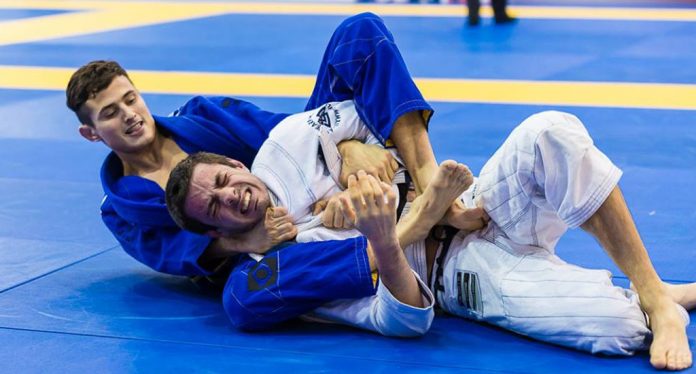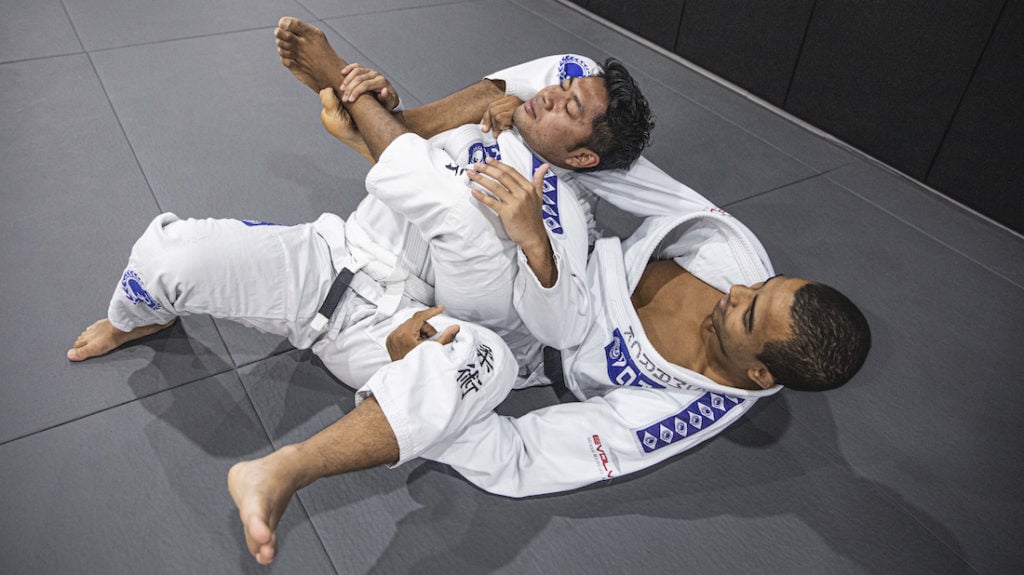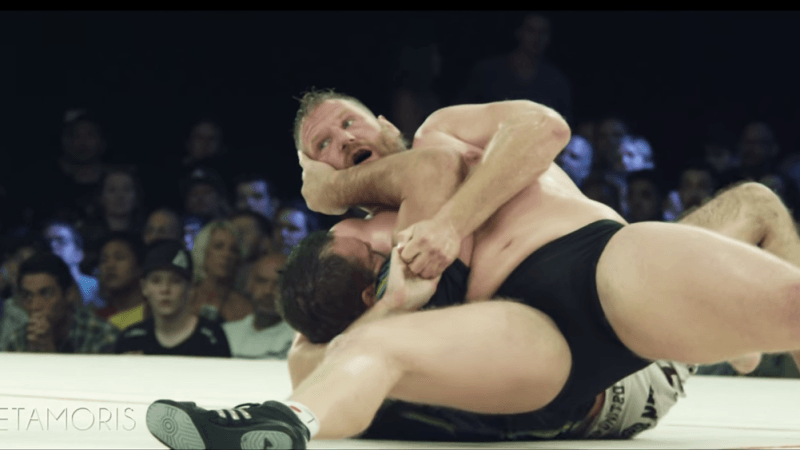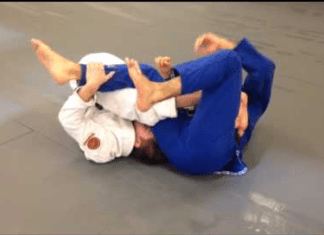
What is your favorite way to finish a Jiu-Jitsu choke? Usually, the answers I get to this question have to do with techniques. People like to set up different chokes and they focus on how they wrap their arms, legs, or combination of both around an opponent’s neck. However, on a more fundamental level, the answer is quite different. It is not as much about what you use to finish a Jiu-Jitsu choke, but rather the methodology that allows you to get the result you’re after – the tap. In other words, it is the “why” behind the chokes, rather than the “how”.
There are different ways to finish a Jiu-Jitsu choke. That doesn’t just mean different techniques. There are different ways of finishing the same BJJ choke (for example a Guillotine choke) if you focus on different aspects of attacking the neck. In that sense, it is the finish that matters, rather than the intricate details of a certain technique. So, how do you go about getting that all-important tap with any choke you use? Let’s explore four different aspects of every choke in BJJ that should provide you with a deeper understanding of choke submissions.
The Fundamentals Of A Jiu-Jitsu Choke
Modern BJJ folks will l have probably thought by now that I misused “choke” in this article. Nowadays, after Danaher’s instructionals, it is all about strangled. However, that’s not always the case and strangles are just a piece of the choking puzzle. So, my use of the word “choke” here is very intentional and is precise, as you’ll find out later on.
The fundamentals of any Brazilian Jiu-Jitsu choke are simple – grab the neck and apply pressure to specific points that might, or might not be located on the neck. Moreover, in grabbing the neck, you can use your arms, legs a combination of both, and/or introduce lapels and collars to the mix. That provides a lot of opportunities which is why BJJ is full of different choking options from every possible position. That said, not all chokes work the same, and most people have their favorite. I was one for Darce chokes for most of my BJJ journey until la while ago when I decided to look deeper into what chokes are. That’s when I started enjoying all chokes, thanks to understanding the fundamental mechanics of how they work.
What you’re looking for with every choke is applying pressure to the neck, while keeping the person in a position that will allow you to steadily increase the pressure until you get a tap or they lose consciousness. The principle behind it every choke is simple – plug the hole. No matter what configuration of limbs or clothes you’re using, you need to make the hole in which the neck is located as small as possible. As long as you can decrease the diameter of the hole, you’ll get a finish, one way or another. In fact, there are four different ways in which you can make people tap form chokes in grappling.
Four Different Finishing Mechanics Of All BJJ Chokes
Every Ju-Jitsu choke has the potential of getting you a tap. However, not every Jiu-Jitsu choke has the potential of putting someone to sleep. This is a very important distinction that everyone needs to make. If you want to make your chokes work better, understanding different ways of finishing is going to be immense.
What are the four main ways of finishing every choke? One is, of course, the much talked about and sought after strangle, aka a blood choke. The second is an air choke, something we often revert to when blood choking doesn’t work for one reason or another. Two more options that people usually do not consider include a chest compression, which is a choke that does not directly affect the neck, and a neck crank. As it says in the title, we’re looking at ways in which you can finish a Jiu-Jitsu choke, which does not limit us to strangling someone.
-
Blood Chokes (Strangles)

When you get a strangle, for example, a Rear Naked Choke, you need to plug the hole using choke mechanics, and then stay like that for 20 seconds. If there’s no tap or nap by the end, tighten up and do another 20-count. What happens during this time is that the blood flow to the brain gets reduced because of pressure on the arteries. The brain will take time to register that there’s less blood flowing, and conversely less oxygen arriving. Once the oxygen falls below a certain threshold (which does not happen instantly) the brain will go into “safe mode” which does include loss of consciousness.
-
Air Chokes

People won’t go to sleep with this one, or at least not as efficiently and as often as with strangles. Moreover, being on the receiving end of a particularly brutal air choke means you’ll have trouble speaking and swallowing for days to come.
-
Chest Compressions
Although they appear unassuming, chest compressions are one of my favorite ways of finishing a Jiu-Jitsu choke. Ever since Josh Barnett tapped out Dean Lister with a chest choke in that crazy Metamoris match, I’ve spent a lot of time researching chest compressions. They really work, and you can actually use them to finish any Jiu-Jitsu choke you get a hold of.

-
Neck Cranks

Putting It All Together
How do you use this information to make your BJJ chokes more effective? Just like with everything else in BJJ, there’s no way to get a choke and only finish it by using one o the above methodologies. Every choke has two or more involved in finishing, even though usually one is predominant. So, first and foremost, forget about getting the perfect choke or strangle or compression. There’s no such thing.
Every choke you set up, even if it is the most carefully set up Rear Naked Strangle, will have components of air choking, chest compression, and/or cranking in it. The reason chokes work is because of the interplay you get from all four ways of finishing. After all, the end goal is effectiveness, isn’t it? The way you can use this information is by always trying to focus on one or more of the “alternatives” when your’ trying to finish a choke in a certain manner.

Wrapping Up
The world of BJJ chokes is a fun one to explore. Knowing that there’s more than one way to finish a Jiu-Jitsu choke and that they all work together will provide you with a different way of looking at chokes. From there on, you can experiment as much as you want. If you could figure out how to finish your favorite choke(s) with each of the four ways above, you’ll be able to tap out everyone that makes the mistake of allowing you to get a hold of their neck.
Different Triangle Chokes For Different Folkes
Crazy BJJ Submissions – Foot Chokes And Armlocks
BJJ Break Falls: Why You Need To Train Them More










































